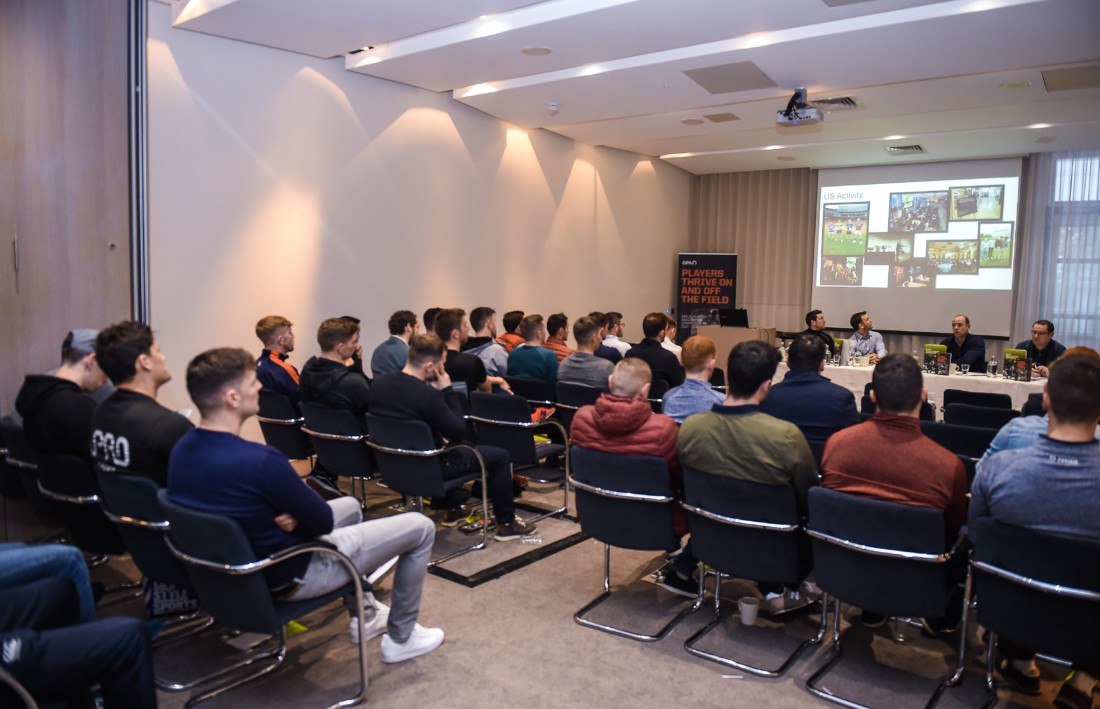AS we edge towards October, many of our teams may still be involved in their final games of the year, often times the most important games of the year!
On the administrative side, club officers should be using the coming weeks to give thought to their pre-AGM and AGM procedures. The Annual General Meeting is the most important meeting of the year and by rule should take place before the end of November each year.
In order to correctly proceed with an AGM, a pre-AGM must happen at least 21 days prior to the AGM in order for sufficient notice to be given, in accordance with GAA Rule. Thus October is the month in which most clubs will host their pre-AGM.
The Annual General Meeting serves the purposes below:
1) Reviews the previous year.
2) Reviews certified accounts.
3) Elects incoming executive committee members and officers.
4) Seeks membership views on club and Association policy.
5) Considers club policy.
6) Makes submissions through motions to the county committee regarding rules of the Association.
7) Acts as an opportunity for the club to get key messages across to a captive audience.
By GAA rule, the club AGM should be held before the end of November so that financial accounts and motions can be presented to the county committee in advance of county convention. The executive committee should set the date and location of the meeting.
There are some important details to remember when organising an AGM.
1) Preparations for the AGM should be made at a pre-AGM, or the AGM should feature on the clár for the previous month’s executive committee meeting (October or possibly September’s meeting). Now is the time of year for your pre-AGM!
2) At least 21 days’ notice of AGM should be given in writing, electronically and/or otherwise to all club members.
3) Invite nominations for positions vacant on club executive and include a ‘notice of motions’ form.
4) Specify the return date of motions and nominations which must be 14 days before the date of AGM.
5) Seven days before the AGM the following documentation should be sent to all members:
– Clár for the AGM.
– Annual secretary’s report.
– Certified accounts.
– Details of the nominations for election to the executive committee.
– Motions for consideration.
The AGM Clár should cover the areas listed below (Rule 8.4 Club Constitution):
1) Adoption of standing orders.
2) Minutes of previous AGM.
3. Consideration of annual report submitted by secretary.
4. Consideration of annual accounts as submitted by treasurer and those certifying the accounts.
5. The chairperson’s address.
6. Election of officer and members of the executive committee.
7. Notices of motion.
8. Any other business.
Secretary’s annual Report:
This is the most important item on the clár. It should reflect on all areas of the club including games, culture, community involvement and so on. The club’s development plan should be the reference point for much of this report, featuring what has been achieved in the club development plan, and what still need to be completed.
The chairperson’s address should follow a similar outline, and collaboration between both officers in preparing the report is encouraged.
Treasurer’s report:
Each club must present and income and expenditure account for the year (Rule 11.8 of Club Constitution) and this should be presented to the county committee prior to the county convention.
It is the treasurer’s role to do this, but accounts must be certified by another suitably qualified person before submission. It is usual for the treasurer to explain in detail the accounts presented at the AGM. The financial statement must be approved by the executive committee and signed by two of the three club signatories i.e. treasurer, chairperson and/or secretary (Rule 11.7 of Club Constitution).
Election of officers:
A secret ballot should be carried-out to decide the result of any contest for a position. The secretary should have prepared a list of nominations prior to the AGM. Only fully paid-up members can vote, youth members do not have a vote.
Prior to elections, tellers should be chosen to count the votes. Only persons whose names are not on ballot papers should be chosen to act as tellers. Votes should be counted by tellers, with results handed to chairperson to be announced. Details of the number of votes received by each candidate should not be made known.
The names of committee members elected should be read-out in alphabetical order, not in order of voting. Where only one person has been nominated for a position this person is automatically elected. Where nominations do not exist a person can be proposed and seconded from the floor by a fully paid member. The person must either accept or decline the position. A person cannot be proposed from the floor where a nomination exists. The chairperson and other officers remain in office until the end of the AGM.
Notices of motions:
These are formal amendments of the constitution but may also take the form of general directives from the AGM to the club committee. Motions for the county convention are also considered, hence the importance of having the AGM prior to the county convention.
Other business:
Only matters of minor importance should be discussed under this heading, or more urgent matters arising since the Clár was prepared.
Following the AGM, the secretary should write the minutes of the meeting as soon as possible. A report should be compiled and submitted to the county convention within 10 days.
A report of the meeting indicating new committee members should be posted on the club’s website and the PRO should forward a report to local newspapers.
Receive quality journalism wherever you are, on any device. Keep up to date from the comfort of your own home with a digital subscription.
Any time | Any place | Anywhere












